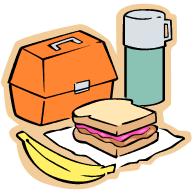The Science of Thermoses

By Joan Whetzel
The humble thermos, once called a Dewar flask or a vacuum flask, was invented by Scottish physicist James Dewar. Thermoses became commercially practical thanks to the efforts of a German glassblower by the name of Reinhold Burger. Once the general public learned that William Perry took them to the North Pole, Ernesto Shakleton took them to the South Pole, and Sir Edmund Hillary carried them up Mount Everest, stores around the world couldn’t keep them on the shelves. Their efficiency at keeping warm fluids warm in such harshly frozen environments made them an immediate hit.
The Basic Construction of the Thermos
Thermoses are constructed with three main components: an outer bottle, an inner bottle, and a lid. Any air and moisture in the space between the inner and outer bottles is removed, resulting in a vacuum, though today’s thermoses frequently fill this space with styrofoam as an insulator to prevent the heat or cold from escaping. The inner bottle is commonly made of mirrored glass, although a plastic liner is sometimes used, especially in thermoses for use with children's’ lunchboxes (to remove the hazards of broken glass). The mirrored glass liners reflect the heat or cold from the thermos contents back into the contents, thus keeping them hot or cold for longer periods of time.
“Thermos Technology” video at the Thermos website:
http://www.thermos.com/thermos-technology.aspx
How Thermoses Work
Thermoses concentrate the heat exchange processes (in the form of conduction, convection, and radiation) to fit the small cavity of the thermos. Conduction transfers heat from the thermos contents to the cold inner bottle and heat from the heated inner bottle to the cold contents of the thermos. Convection heats the inner bottle, thanks to the shape and the lid, which traps the steam from the hot food or liquid allowing it to circulate in the air between the thermos contents and the cap. Radiation reflects the heat off the glass inner bottle, or returns off the Styrofoam insulator, returning the heat back into the contents of the thermos. The vacuum between the inner and outer bottle (or having it filled with Styrofoam) reduces heat loss through conduction and convection. Glass inner bottles reduce heat loss through radiation.
Thermos Uses
Because thermoses keep their contents hot or cold over prolonged time periods, they open themselves up to number of jobs, such as:
· Keeping food and beverages hot or cold, for soldiers in the battlefield, for camping, or for everyday use.
· Transporting vaccines, blood, plasma, insulin, and other biological and medical products that must be kept refrigerated or frozen.
· Delivery of tropical fish.
· Storing liquid nitrogen or liquid oxygen in labs.
· Keeping eggs, milk, and other perishables fresh while camping, or during emergencies when the power goes out.
· Carrying hot water on boats and other locations without a way for storing fresh hot water to be used for cleaning, bathing, making hot beverages, etc.
· Rehydrating dried foods by soaking them in hot water and putting the lid back on the thermos. This process takes about 2 to 3 times longer that it would to reconstitute the foods by simmering them on the stove, but it uses less energy.
Thermos Tips
1. To help the thermos keep hot foods hot longer, preheat it by pouring hot water into the cavity and twisting the lid on it. Then let it sit for about 5 to 10 minutes, before pouring the water out and filling it with hot liquids or food. This will help them stay hot longer.
2. To help cold foods stay cold longer, pre-cool the thermos ahead of time. Pour ice cold water into the inner bottle and close the lid up. Let the cold water chill the interior for 5 to 10 minutes before draining it and filling the thermos with cold food or beverages.
3. Another method for keeping cold foods and beverages cold for longer periods is to open the thermos and place it in the refrigerator or freezer. This allows the inner chamber to chill down over night before filling it with cold foods or beverages.
Bibliography
Pickover, Clifford A. The Physics Book. New York: Sterling Publishing, Inc., 2011.
Newton - Ask a Scientist. Thermos Physics.
http://www.newton.dep.anl.gov/askasci/phy99/phy99x81.htm
Easy Family Boating Recipes: Uses for a Thermos on a Boat.
http://www.easy-family-boating-recipes.com/articles/uses-for-a-thermos-on-a-boat
Genuine Thermos Brand. Care and Use: Stainless Steel Vacuumware.
http://www.thermos.com/careuseStainlessSteelVacuumware.aspx
Family Survival Planning. The Thermos.
http://www.family-survival-planning.com/thermos.html
How Stuff Works. How Thermoses (Vacuum Flasks) Work.
http://www.family-survival-planning.com/thermos.html






